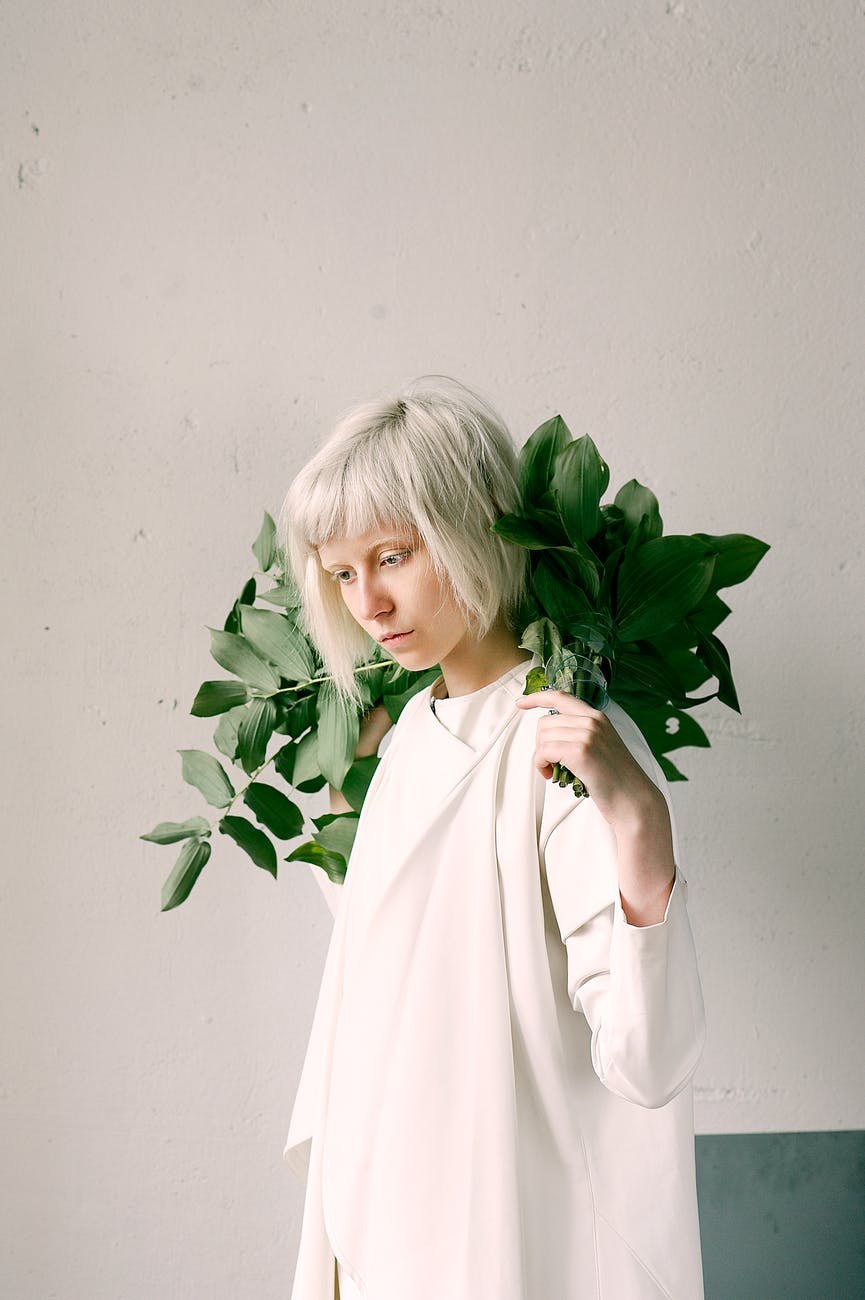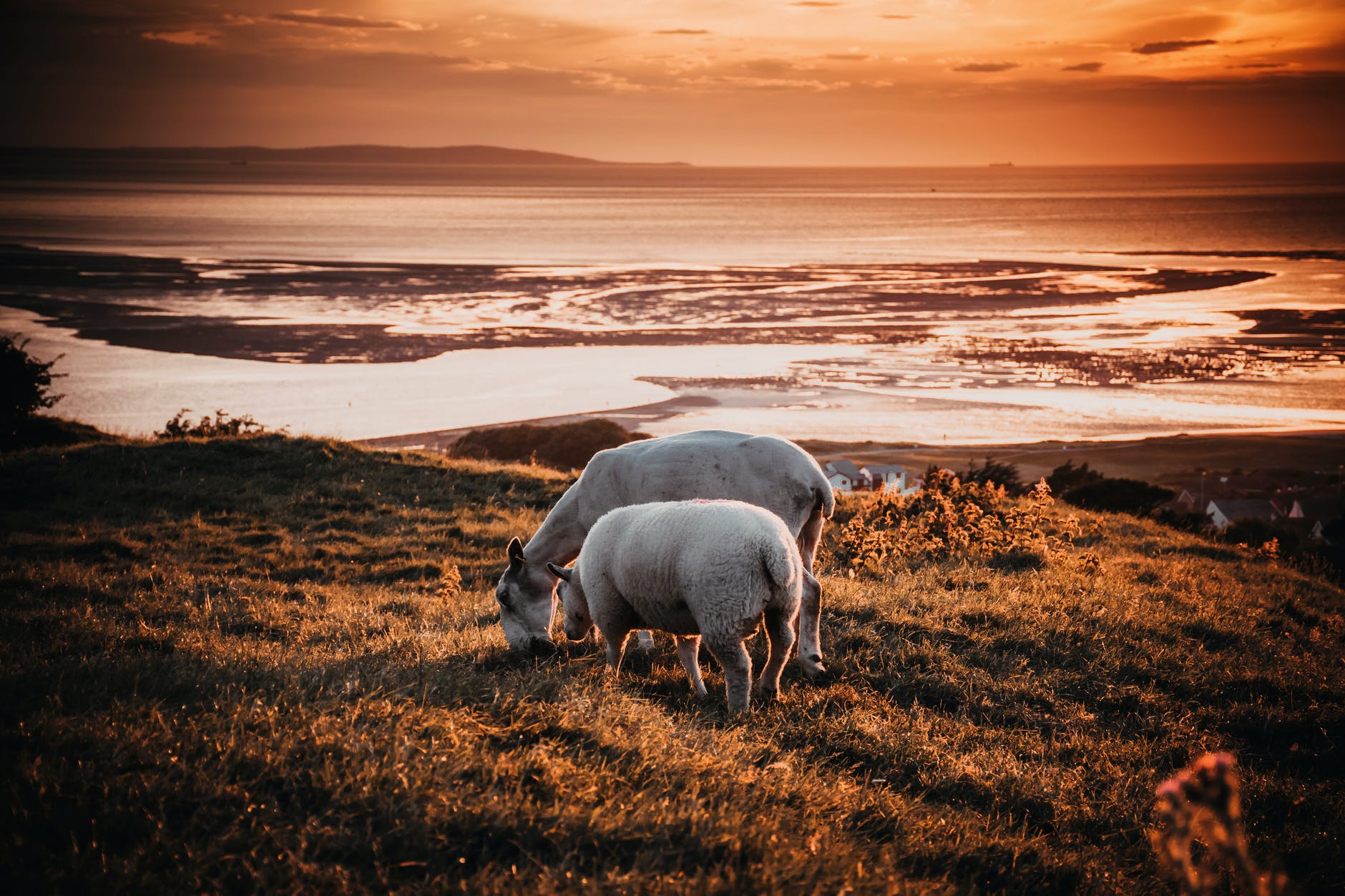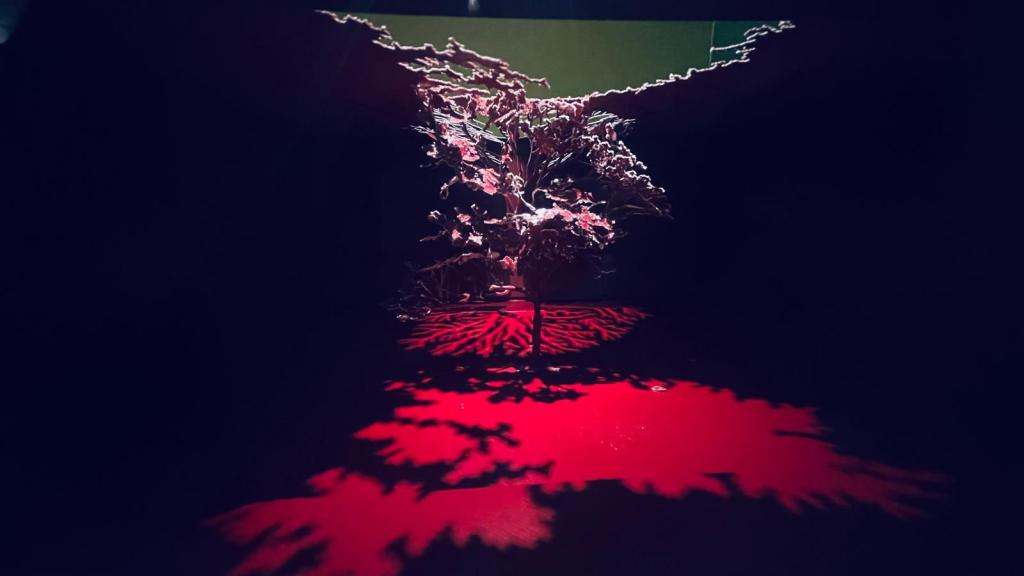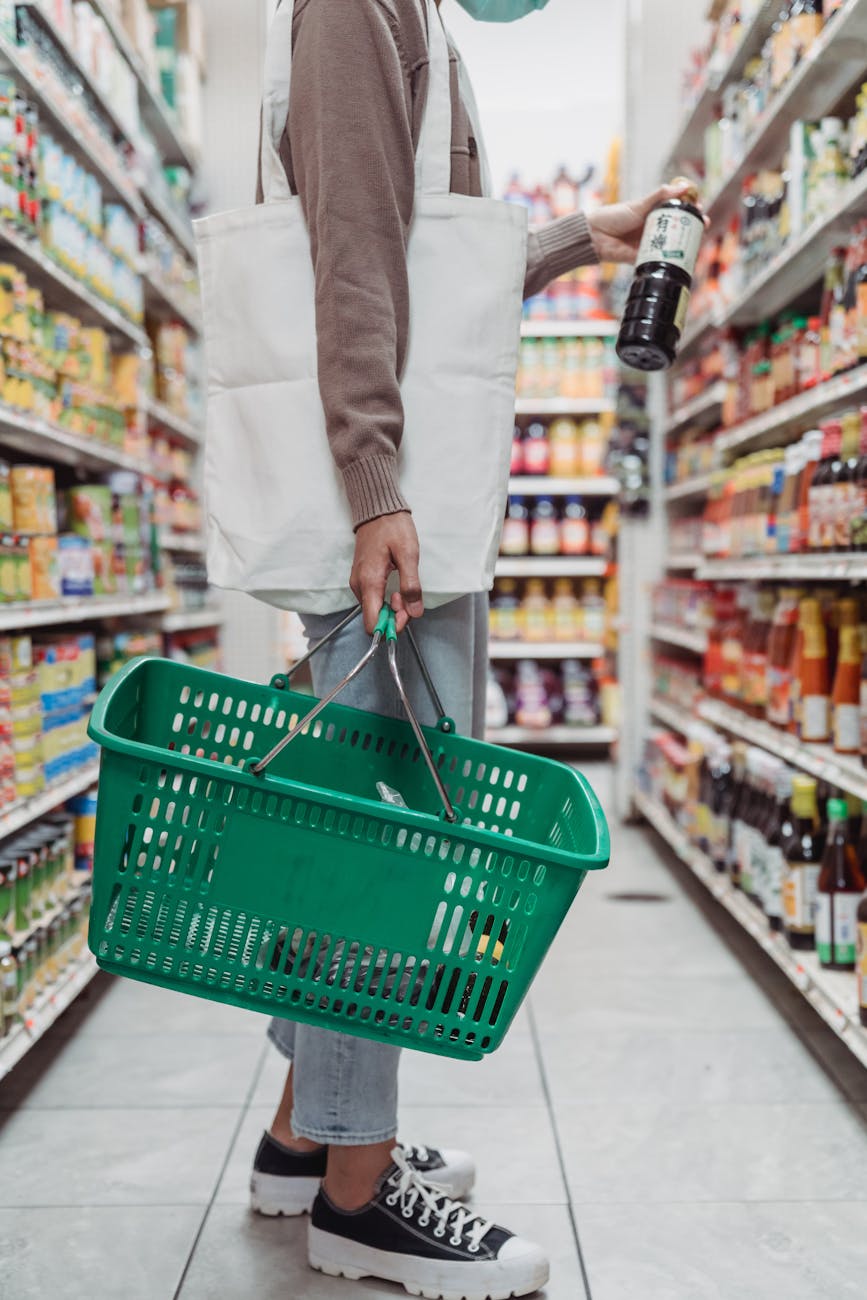When you think about veganism, probably the first thing that pops into your head is eating plant-based. Vegans do not use any products of animal origin. This means: no leather shoes, nor anything made of wool, silk, fur or down. So why not? And what does a vegan wear instead? This article was first published on Shop Like You Give A Damn by Kim Van Langelaar. We edited and re-published it here under the author’s permission.
What is vegan fashion?
Vegan fashion simply means: clothing, shoes, bags and other accessories that were made without using and harming animals. To be more specific: fashion items that do not contain any animal materials and for which no animal by-products were used during the entire production process.
The fashion items in your own wardrobe might be made with animal materials such as wool, leather, suede, fur, down, felt, silk, or dye and glued with materials of animal origin. So what remains if you’d want to go for a vegan closet? Seems like it wouldn’t be much, right? Boring stuff?
Good news: it’s anything but. You can be just as stylish wearing vegan & fair garments and slow fashion as you would be wearing mainstream, ‘regular’ or even fast fashion. In fact, it would be hard to tell the two kinds apart most of the time. But that (often invisible) difference can mean the world, both for the lives of the animals and for the environment.

Why choose vegan clothing? The effect of the clothing industry: animal suffering
Although a person is often vegan for ethical reasons like compassion for animals, a vegan lifestyle has many more positive effects. For the people, the environment and even your own health.
Apart from the environmental impact, the clothing industry brings a lot of animal suffering with it. Most of this suffering is hidden and the consumer rarely hears about, thinks about or sees it. That is by design.
In short: many of the conventional materials that our clothing is made from come from animals which are kept locked up, are being tortured and exploited throughout their short lifespans, and are eventually prematurely killed. Not just for clothing (think of furs such as wool), but also for cosmetics (animal testing) and food (extracting animal bodily fluids like milk), for instance. The killing of all animals in the industry inevitably occurs as soon as an animal is no longer profitable, or earlier for its skin (e.g. leather or fur), its flesh, muscle mass and fat (served as meat), or other animal substances (such as silk) and body parts.
These industries are focused solely on profit and that comes at the expense of animal rights and their lives. Amazingly enough, few people think it’s okay how and on what scale animals are being abused in this industry. But the problem is: we often do not know what precedes the products that we consume because it all takes place behind closed doors.
The environmental impact of the clothing industry
Another important reason for veganizing your wardrobe might be the environment. The production of all those fabrics for clothing manufacturing puts a massive stress on Earth – but did you know that the materials that are considered regular clothing materials, like wool, silk and leather, are also some of the most polluting fabrics?
- A process called enteric fermentation, a normal part of digestion in ruminant animals such as cows, sheep & goats cause high greenhouse gas emissions including methane: a gas that is about 30 times more efficient in trapping heat than CO2. This wouldn’t be a problem if it wasn’t for the sheer amount of livestock on our planet. Livestock farming therefore has a large, direct impact on global warming.
- A lot of chemicals and pesticides are being used in these industries – on the land livestock grazes on, and sometimes even on the animals themselves. In the processing, cleaning and painting of hides and coats to make it “leather”, a variety of toxic chemicals are used that will end up in the air and groundwater. This may even result in heavily contaminated drinking water and food in the surrounding area, which causes people and animals alike many kinds of health problems. In addition, the skins and lungs of factory workers in these industries are exposed to these types of hazardous chemicals every day, often unprotected.
- Colossal amounts of water are consumed in these industries: the animals drink tens of thousands of liters of water per year alone. Furthermore, slaughtering and tanning their skin as well as washing their fur also costs a substantial amount of water. The same goes for the silk industry, where the silkworms are cooked alive. The production process is not only animal-unfriendly but also inefficient: silk has a high environmental impact and is, per kilogram of fabric, even the most harmful clothing fiber of them all.
Next, we’ll give you a breakdown of all the fabrics you would want to avoid if you are on the road to being more environmentally conscious and concerned with animal rights, or if you want to generate a smaller carbon footprint in general.

Which clothing materials are not vegan?
Wool & felt
Wool consists of the hair of animals such as merino sheep, angora rabbits, cashmere or angora goats. It can appear on clothing labels as wool, merino, cashmere, mohair or felt. The conditions under which these animals are bred, kept, plucked and shaved are often very poor and, as mentioned above, these materials are also a particularly eco-unfriendly product.
Unfortunately, the vast majority of the sheep wool that we use in a lot of European countries, comes from parts of the world where mulesing is still common practice. These sheep are specially bred with wrinkled skin that has many folds, meaning: more wool per animal, and therefore more profit. But as a result, a lot of urine and faeces remains in the animals’ skin folds, where flies easily lay their eggs in. When the larvae of these flies come out, they start eating the sheep: this is extremely painful and eventually becomes fatal for the sheep. To prevent this, the breeders cut pieces of skin and meat away from the sheep’s tail and hind legs – often without the use of anesthesia. We wrote this extensive article about wool, which answers questions such as why there is so much animal suffering behind this industry and animal – free alternatives.
Leather & suede
Leather is really nothing but fur without hair: it is the skin of, for example, cows, calves, horses, lambs, goats or pigs. There is a European import ban on dog and cat fur, but no ban on importing dog leather: this may therefore also be sold in Europe. It’s unknown in which products this material is processed, as the brands do not have to state from which animal the leather is made.
Maybe fur is something you could never wear – but as said earlier: leather is basically fur but with the animal hairs removed. Don’t think there’s no animal cruelty happening in other animal skin ‘producing’ industries. Not only does the animal obviously has to die to get its skin processed into leather: that skin is often industrially mass-processed by an industry that solely focuses on profit, resulting in a life not worth living for many of these animals that are being kept there. In contrast to what is often assumed, leather is not only a by-product of the meat industry. Every year more than a billion animals are killed for their skin alone by the leather industry.
In addition, leather is treated with all kinds of toxic chemicals such as cyanide, coal tar and chromium to prevent skin decomposition, for a better color and for better usability. Without this ‘tanning’ the animal skin would soon decay. Hence, large amounts of toxic waste material are poisoning and polluting not only our planet, but also all the people that have to work in these unhealthy circumstances.
We have also written an extensive article on the realities of the leather industry .
Fur
Fur is made from the skin of minks, rabbits, foxes, dogs, seals, raccoons, cats, coyotes, chinchillas and many other living beings. On fur farms, they live under terrible conditions and in very small cages, which often cause these curious and intelligent wild animals to be driven into insanity. They eventually start acting out in different ways like fighting, self-mutilation and cannibalism. Note that humans are not different here, we have been known to display similar behaviours in similar situations. Where minks are usually gassed, foxes and raccoons are often killed by an electric rod – a process so appalling that we’re not keen on writing that in this article. What’s even worse: the electrocution does not always work well, which means that the animals are skinned alive.
Unfortunately, the global demand for fur has risen sharply in recent years and its price has fallen. Real fur is often difficult to distinguish from high-quality fake fur, which means that a lot of real fur has been able to sneak into collars and hoods of coats.
Feathers & down
Feathers are plucked from the skins of geese and ducks, but also from chickens and pheasants. Down is often used as insulation material in coats, sleeping bags or comforters, where other (exotic) feathers often have a decorative function. Often the exact origin of the feathers cannot be traced.
The plucking can take place after the geese and ducks have been slaughtered for their meat, so these materials are seen as a by-product – although this indirectly supports the foie gras and egg industries.
However, it is more lucrative for them to pluck these animals while they’re still alive. Geese for example can be plucked up to four to five times during their lifetime – when moulting and their feathers are loose, for example. But the industry often doesn’t wait for that moment to arrive, as not all animals in a herd are in the same stage of moulting. In some animals, the feathers will not be sufficiently loose. This leads to pieces of skin being torn off along with the feather, at considerable pain and stress for the animals.
Silk
Silk comes from a substance that is secreted by the silkworm, the larva of a butterfly species. The caterpillar produces this fabric to be able to weave a cocoon with silk threads in which it can transform into a moth. But to be able to use these fibers industrially, the caterpillars are usually cooked alive, in order to make sure that the animal dies, leaving the cocoon intact.
An enormous amount of caterpillars are needed to make a silk garment. More than 600 cocoons are used for a silk blouse and large amounts of water are used during production. It is cruel as well as inefficient, not to mention a resource-costly process. Once again the environment pays a toll. There is a way to retrieve the silk while keeping the caterpillars alive – but in that case the animals are so inbred, that they are incapable of living, flying and eating normally, so it is still a far cry from freedom.
The shine that silk is known for, is not because of the caterpillars, but because of the weaving technique. A textile made with the same technique (where yarns are woven closely together), is called satin. No need for any animal-based resource here too.

Other animal substances commonly used in clothing and cosmetics
It is not just wool and felt, leather and suede, fur, silk, feathers and down that can be found in fashion items. Did you know that even shoes made of synthetic materials, cotton t-shirts and your make-up bag could contain all kinds of animal additives? We will list a few of the most common ones.
- Glue
Shoes and handbags are often made with glue that contains animal ingredients. That glue usually contains parts of bone, skin or milk protein casein. - Ink
Some textile clothing dyes contain animal materials, such as blood from crushed lice, bones and snails. The most common ink is also not water-based, but based on plastisol: a very environmentally unfriendly product. - Screen-printing (or: silk-screening) emulsion
The screen-printing used to print T-shirts usually contains gelatin. This substance comes from the slaughter waste such as bones, skin and cartilage from, for example, cows and pigs. - Mother of pearl and horn
These materials are sometimes used for the production of buttons, jewellery and combs. Mother of pearl comes from the shells of mussels, which can be killed for this material or die during the breeding process. Horn is the hard material of horns, hooves and beaks that mainly consist of keratin-rich dead cells. - Animal substances in cosmetics
Even ‘cruelty-free’ makeup and other personal care products regularly contain beeswax or honey gained from a beehive, carmine (from crushed lice), collagen (for example from fish), elastin (from cows for instance), keratin (from hairs, hooves, beaks and bones), lanolin (wool fat from sheep), glycerin (usually animal fat, but can also be of vegetable or synthetic origin) and much more. Further reading: Why avoid honey & beeswax?
- Fur in makeup brushes & eyelash extensions
Makeup brushes usually contain animal hairs, including mink and martens, squirrels, goats and even ponies. The hairs of the two latter are byproducts of the goat and horse meat industry. False eyelashes that are not synthetic are also made from silk or mink fur.
What are vegan and more sustainable alternatives in fashion?
Luckily, nowadays there are plenty of beautiful vegan textiles and other materials that can be made without exploiting animals and have a smaller carbon footprint.
Hemp, organic linen, recycled and organic cotton, recycled polyester and nylon, Lyocell/Tencel, EcoVero, Modal made from sustainable wood pulp, bamboo, monocel, triacetate (wood silk) and even biodegradable bioplastic (made from sugar cane, for example) are good options if you’re looking for stylish and eco-friendly vegan and fair clothing.
There is wool-free knitwear available, a well as flowy silk-like and plant-based fabrics, synthetic felt, artificial feathers and plant-based down. There are vegan, cruelty-free and chemical-free options available for all kinds of cosmetics and beauty products, makeup and care products. And makeup brushes and false eyelashes can also be found in high-quality synthetic variants. Totally cruelty-free.
Nowadays, you can find the most beautiful faux leather and high-quality imitation suede bags, shoes, belts, wallets and other accessories. We hear you thinking: isn’t synthetic leather just second-class fake leather that looks cheap? We understand your scepticism as imitation leather and suede are often made from new plastic and not much better for the environment than their animal-based counterparts. But the materials we’re talking about are not the same as the ones you have been introduced to for years.
Every day the most luxurious, sustainable and innovative plant-based leather types are added: made from pineapple fibers (Piñatex), apple peels and mushrooms, cork, washable paper, recycled or natural rubber, recycled polyester and many more materials which are currently being developed and have yet to come to market.
To be clear: all newly produced clothing materials and other fashion items have a certain footprint. Simply because all processing has an impact on the environment. For example, even if a garment is produced in a climate-friendly manner, it can still contribute to the plastic soup via the micro-fibers that the textile sheds while being washed. Another material may need a lot of pesticides in the cultivation. But all of these options are better than what we are working with right now, and that’s progress.
That’s why we say: the less you buy, the better. But if you shop vegan and fair, then at least you know that you aren’t unintentionally contributing to unnecessary human or animal suffering. These days, you can easily choose for ethics without having to compromise on your aesthetics.

So where can you buy vegan, fair & sustainable clothing?
You can shop from the largest online vegan department store in Europe Shop Like You Give a Damn, where you can choose from thousands of products from hundreds of different brands and sellers. We’ve only just begun, but Shop Like You Give a Damn is well on her way.
We offer a beautiful vegan women’s and men’s collection including fashion, bags, shoes, and all kinds of accessories in our sustainable range. You’ll also find cruelty-free cosmetics and vegan beauty products like makeup, skincare and personal care products, fragrances and hair care products.
What gets you to feel really good in your own skin and clothes, is making conscious purchases that haven’t contributed to exploitation and other unnecessary misery in the world. That’s why we only offer vegan products at our online department store, produced as eco-friendly as possible and fair trade, with fairly paid workers in safe working conditions. In short: fair fashion in every respect. Each item in this store carries one or more labels that you can use to select or filter items with, according to the criteria that matter most to you.
If you want to learn more about who we are, why veganism is so important to us, and why we founded this department store, we have written it all down for you.
Have fun shopping!
Dutch groetjes from Alex, Stephan and Kim.
This article was first published on Shop Like You Give A Damn by Kim Van Langelaar. We edited and re-published it here under permission.
Check out the Ethical Fashion Brands Directory
Subscribe to our mailing list to receive the GreenLivingUK e-bulletin packed with useful eco-living tips.






You must be logged in to post a comment.